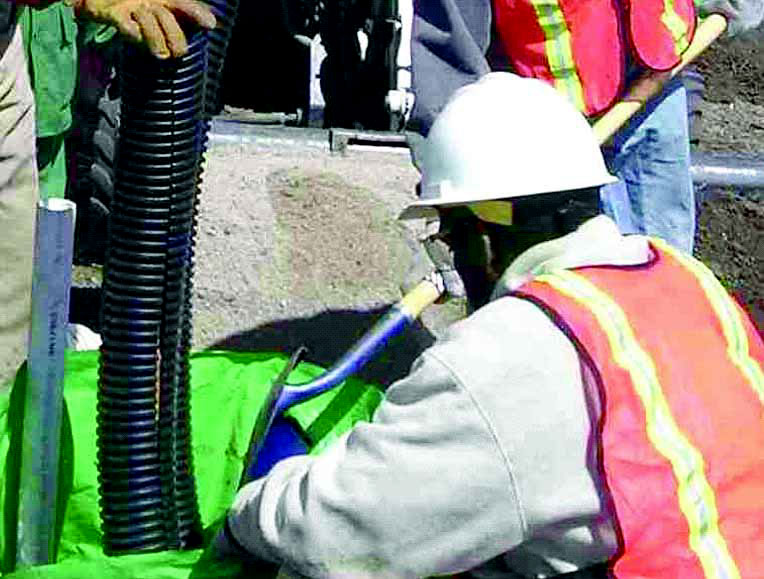| COOPERATIVE CONSERVATION CASE STUDY | | Murdock Clean Water Partnership | | Trees Help Clean Up Rural Water Contamination | | Location: Northeastern/Mid-Atlantic | | Project Summary: The community of Murdock, Nebraska, and state and federal partners, used innovative technologies to solve ground and surface water contamination. |
|  | | Workers planting trees in a deep hole for the phytoremediation project at Murdock, Nebraska - April 2005. (Photo courtesy Argonne National Laboratory) |
|
Resource Challenge
Not long ago, children who used Murdock, Nebraska’s school athletic fields in the summertime played on parched grass and exposed gravel. At the same time, a nearby creek was virtually unusable because of limited public access and because carbon tetrachloride, used decades ago to fumigate stored grain, had entered the aquifer that lay beneath the town and that fed the creek.
Two problems turned out to have one very creative solution. Faced with the need to treat contaminated groundwater and protect the creek, State and Federal governments, regulators, the local school district, the village, and private citizens set up an innovative system that is dramatically improving the community’s recreational and educational opportunities while at the same time ridding the town of its contaminated water.
| Examples of Key Partners
U.S. Environmental Protection Agency, USDA Farm Service Agency, U.S. Department of Energy Argonne National Laboratory, Nebraska Department of Environmental Quality, Stock Seed Co., Village of Murdock, Elmwood-Murdock Public School, local landowners, and others.
|
| Results and Accomplishments
The Murdock Partnership used an innovative system that combines multiple technologies to address surface and groundwater contamination. Near the contamination source, pumps extract contaminated ground water, which goes to a spray irrigation system that dissipates carbon tetrachloride harmlessly into the air. The treated water is reused on the school’s athletic fields, nurturing a healthy, grassy surface for the children.
To supplement the spray technology, partners worked with landowners, the town, and local farmers, planting more than 2,000 trees downstream from where the groundwater enters the creek. These trees take up contaminated water and break down polluting chemicals naturally, a process called phytoremediation. Native prairie plants around and between the trees intercept rainwater and force the trees to draw most of their water from the aquifer.
This year, partners are restoring a downstream wetland to intercept lingering traces of the polluting chemical before it enters the creek. They are also installing an ADA-accessible trail at both the tree plantation and the wetland for public use. Interpretive signs will enhance the visitor’s experience and facilitate use of the site as an outdoor “living” classroom.
Further partnerships will be formed as installation is completed and the community begins to fully use the new resources.
|
|
Innovation/Highlight A combination of tree plantings and other natural treatments, including an innovative new spray technology, helped resolve ground and surface water contamination, while enhancing recreational opportunities for local residents. |
| |
 Land Conservation
Land Conservation Conservation
Conservation Arkansas
Arkansas California
California Colorado
Colorado Houston
Houston Idaho
Idaho Louisiana
Louisiana Maine
Maine Mississippi
Mississippi Habitat
Habitat
 Land Conservation
Land Conservation Conservation
Conservation Arkansas
Arkansas California
California Colorado
Colorado Houston
Houston Idaho
Idaho Louisiana
Louisiana Maine
Maine Mississippi
Mississippi Habitat
Habitat